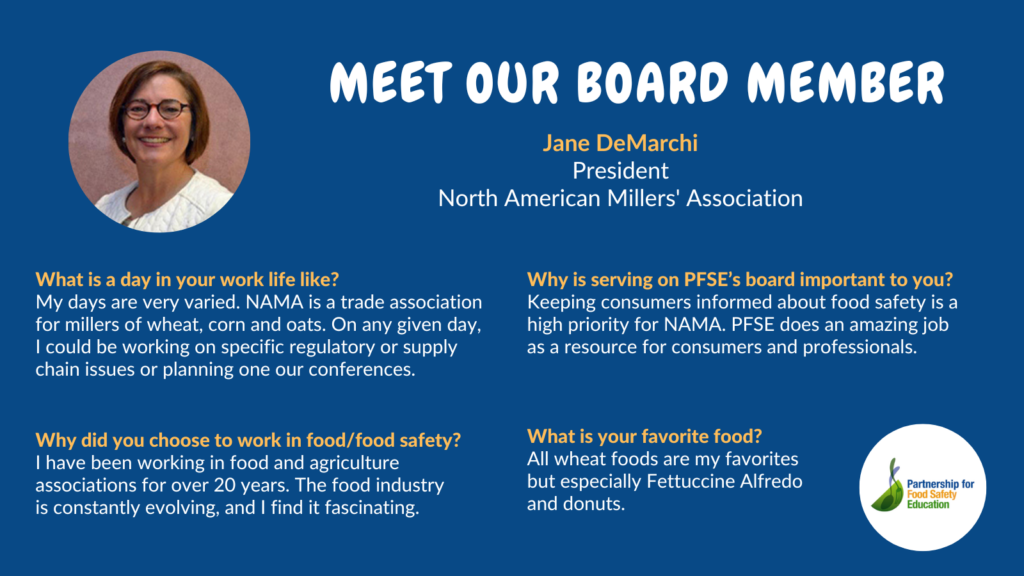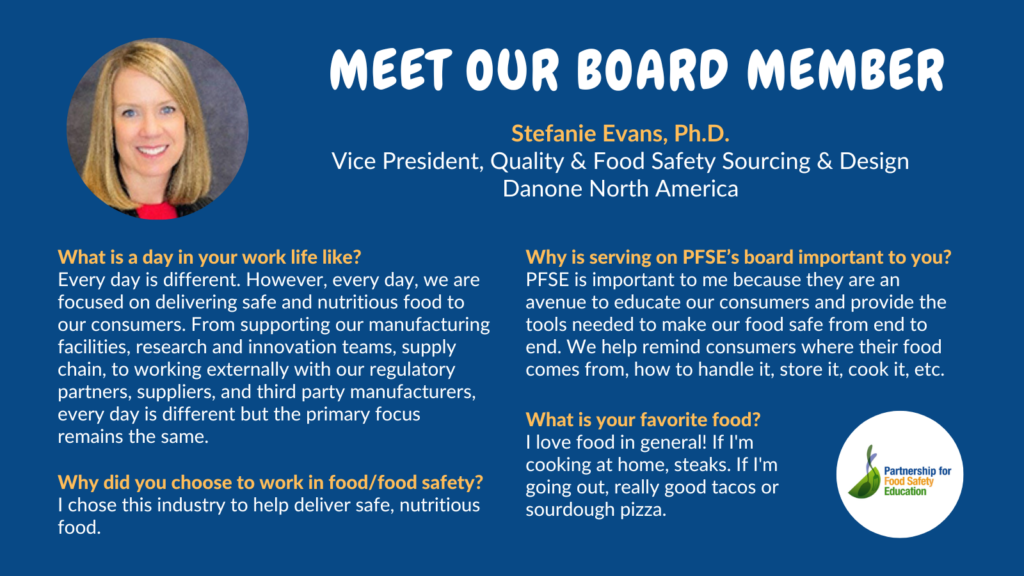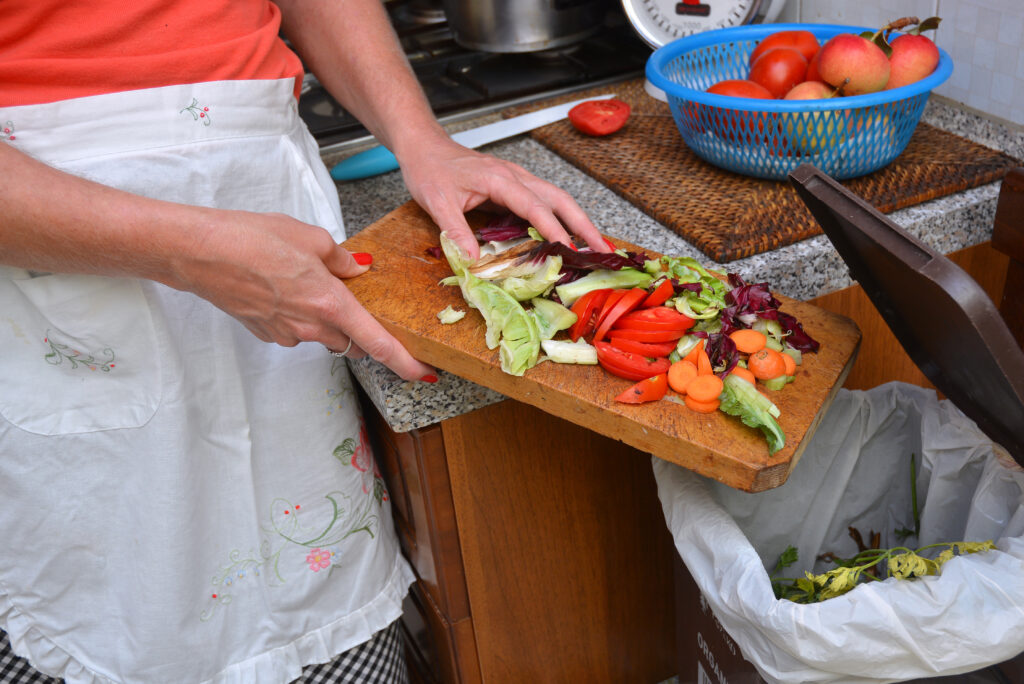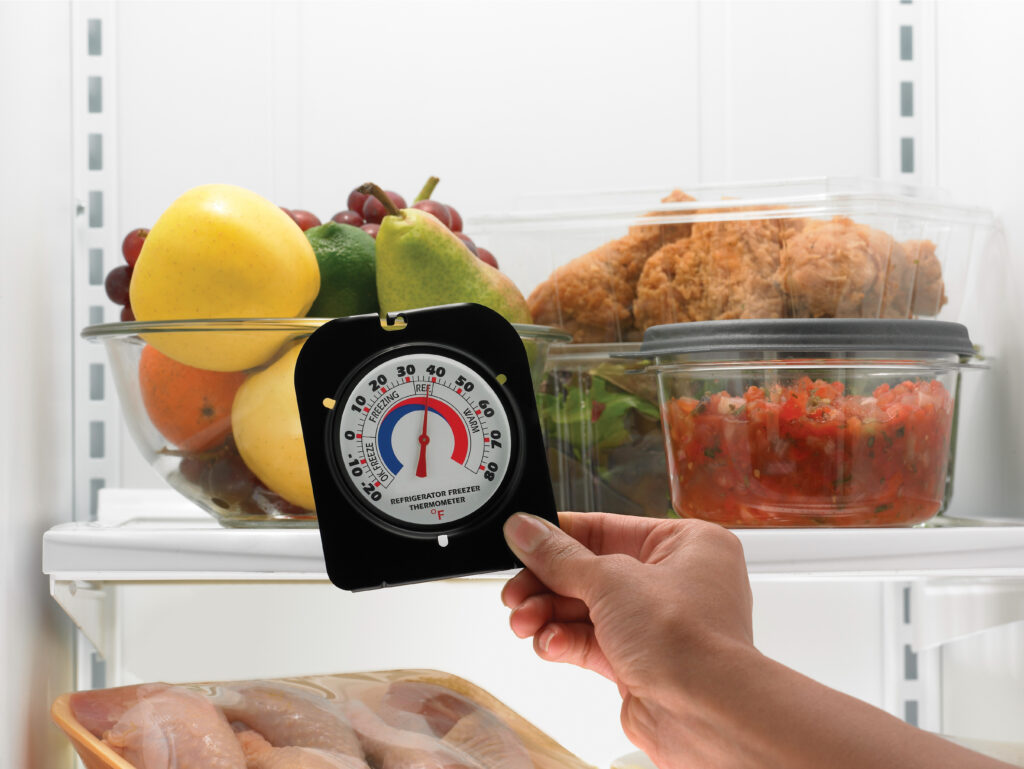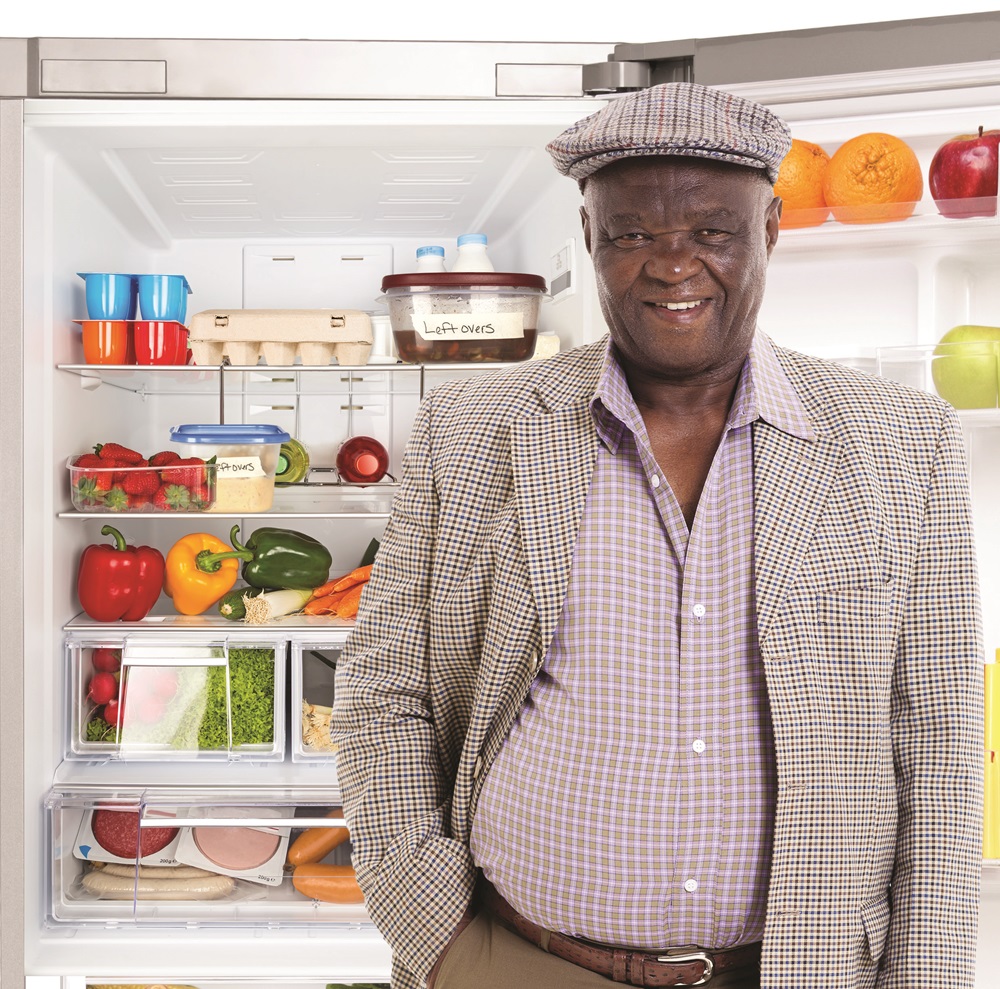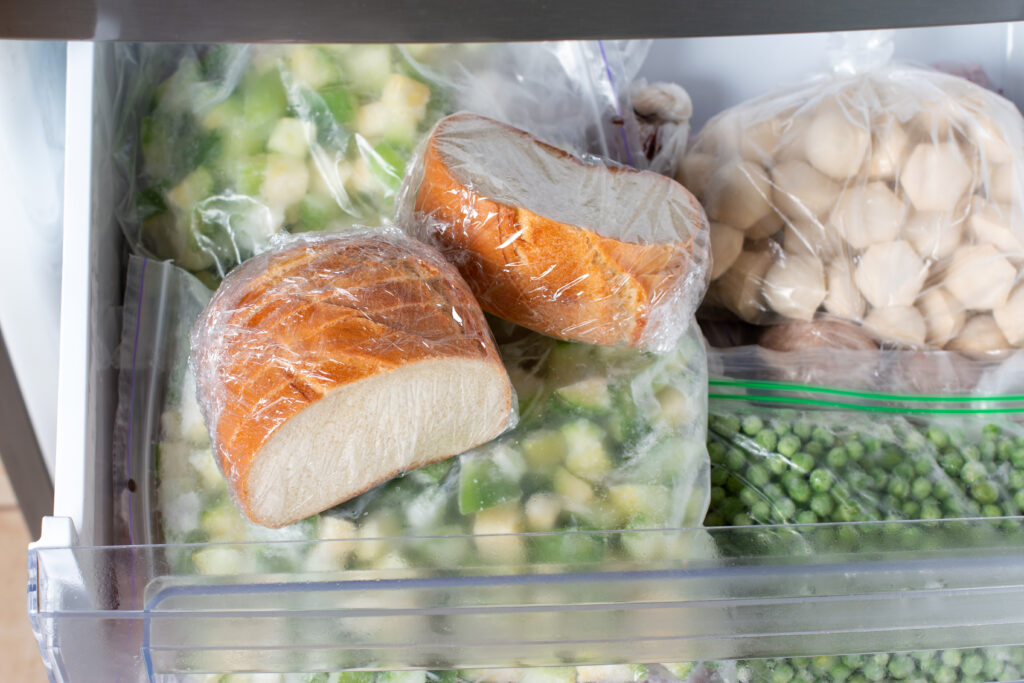Maintain Food Safety While Cutting Food Waste
Celebrating Black History Month
Cut Food Waste and Maintain Food Safety at Home
(This blog post was developed from a Knowledge Exchange event sponsored by the non-profit Partnership for Food Safety Education on Jan. 16, 2018. Access a recording of the 30-minute event.)

Reducing the risk of foodborne illness for consumers is the primary focus of the Partnership for Food Safety Education. One in six Americans get a foodborne illness each year. In our work as food safety educators we can support consumers with actions they can take to reduce cross-contamination and to handle food in a way that helps them manage risk of germs like salmonella, campylobacter, E-coli and listeria monocytogenes.
Food waste is food that is discarded or lost uneaten. Sometimes in food safety education we encourage food to be tossed uneaten if it can pose a health risk to a consumer. Food waste is a huge challenge to our natural resources, our environment, and our pocketbooks.
Howard Seltzer, a National Food Safety Education Advisor at the U.S. Food and Drug Administration, has been a terrific supporter of the Partnership and a true colleague in food safety education. Howard recently shared information with the BAC Fighter community on food waste and food safety.
Q: What is the connection between food waste and food safety?
Seltzer: Food waste by consumers can result from fears about food safety. Some of these fears relate to misunderstandings about what food product dating actually means. Also, consumers can be uncertain about how to store perishable foods.
Q: What are the basics of understanding food product dating?
Seltzer: Except for infant formula, dates on food products are not required by any Federal law or regulation, although some states do have requirements for them. Most of the food dates consumers see are on perishable foods. These are foods likely to quickly spoil, decay or become unsafe to eat if not kept refrigerated at 40° F or below or frozen at 0° F or below. Perishables include meat, poultry, fish, dairy products, eggs, and fresh fruits and vegetables. Producers of perishable food use dates to help ensure that consumers buy or use them while the products are at what the producers consider their best quality.
- Sell by date indicates that a product should not be sold after that date if the buyer is to have it at its best quality.
- Use by date or Best by date is the maker’s estimate of how long a product will keep at its best quality.
These are quality dates only, not safety dates. If stored properly, a food product should be safe, wholesome and of good quality after its Use by or Best by date.
Q: What are tools that BAC Fighters can use in educating consumers about storing and handing perishable foods?
Seltzer: The U.S. Department of Agriculture, Cornell University and the Food Marketing Institute cooperatively developed an app called “The FoodKeeper”. This app tells you how best to store perishables and how long they will keep safely. “The FoodKeeper” app is a complete guide to how long virtually every food available in the United States will keep its quality and flavor in the pantry, in the refrigerator, and in the freezer. You can download the FoodKeeper as a mobile app on your Android or Apple devices. You also can access it at FoodSafety.gov.
Q: What are some practical grocery shopping and eating tips that can help consumers manage their food at home?
Seltzer: First of all, don’t buy more perishable food than you can reasonably consume before it reaches its maximum storage time. For example, prepackaged luncheon meats will keep two weeks when stored in the refrigerator or three to five days if refrigerated after opening. Plan your meals and use shopping lists. Think about what you are buying and when it will be eaten or used. Before you shop, check your fridge and pantry to avoid buying an item that you already have.
Also, avoid impulse and bulk purchases, especially fresh produce and dairy that have limited shelf life. Promotions encouraging purchase of unusual or bulk products often result in consumers buying foods outside their typical needs or family preferences. These foods may end up in the trash.
Lastly, when eating out, become a more mindful eater. If you’re not terribly hungry, request smaller portions. Bring your leftovers home and refrigerate or freeze them within two hours.
Q: Potential for waste of these foods is high for perishable foods. What are the most important tips around storing perishables?
Seltzer: Here are a few important tips on storing of perishable foods so that you can avoid food waste. Make sure the temperature of your refrigerator is at or below 40° F. This will ensure perishables are stored safely. Next, avoid “over packing” your fridge. Cold air must circulate around refrigerated foods to keep them properly chilled. Wipe up spills in your refrigerator immediately. This action will reduce the risk of cross contamination where bacteria from one food get spread to other foods in your refrigerator. Finally, check your fridge often to keep track of what you have and what needs to be reheated and eaten or put in the freezer for later use. Leftovers should be used within 3-4 days. You can avoid wasting food by planning to eat these leftovers within the 3-4 days.
Q: What’s the difference between spoilage bacteria and the bacteria that can cause a foodborne illness?
Seltzer: Most people would not choose to eat spoiled food. However, if they did, they probably would not get sick. Spoilage bacteria can cause fruits and vegetables to get mushy or slimy, or meat to develop a bad odor, but they do not generally make you sick. Pathogenic bacteria cause illness. They grow rapidly in the Danger Zone-the temperatures between 40 °F (4.4 °C) and 140 °F (60 °C) and do not generally affect the taste, smell, or appearance of food. Food that is left too long at unsafe temperatures could be dangerous to eat, but smell and look just fine.
Check out these quality resources on reducing food waste while maintaining food safety at home:
FDA Article on Food Waste and Food Safety
Refrigerator & Freezer Storage Chart (PDF)
FDA Food Waste Fact Sheet (PDF)
“Home Canning and Botulism” Article
FoodKeeper app: Android Devices | Apple Devices
Mix and Match Your Fight BAC Resources for Custom-made Classes
BAC Fighters know that there are a wide variety of food safety education resources on FightBAC.org. The site features ready-to-go campaigns that require simply a printer for downloadable brochures and flyers, or a projector for ready-made PowerPoint presentations.
Educators may also personalize Fight BAC resources using their creativity to come up with engaging new classes for their community, like Marilen Howard did. Marilen is Director of Nutrition Education & Training at Northeast Valley Health Corporation in California. She is not only familiar with the Fight BAC resources; she knows how to use them to create specially-designed presentations to educate her WIC community.
for their community, like Marilen Howard did. Marilen is Director of Nutrition Education & Training at Northeast Valley Health Corporation in California. She is not only familiar with the Fight BAC resources; she knows how to use them to create specially-designed presentations to educate her WIC community.
Marilen’s Keep Your Food Safe WIC classes start with Core Four food safety information, using logos and graphics from the site to create an engaging PowerPoint presentation. Each slide encourages participants to learn about and then share their home food-safety strategies. Presenters evaluate understanding using the answers given during the virtual spin-the-food-safety-wheel game. For the finale, participants watch the Story of Your Dinner video.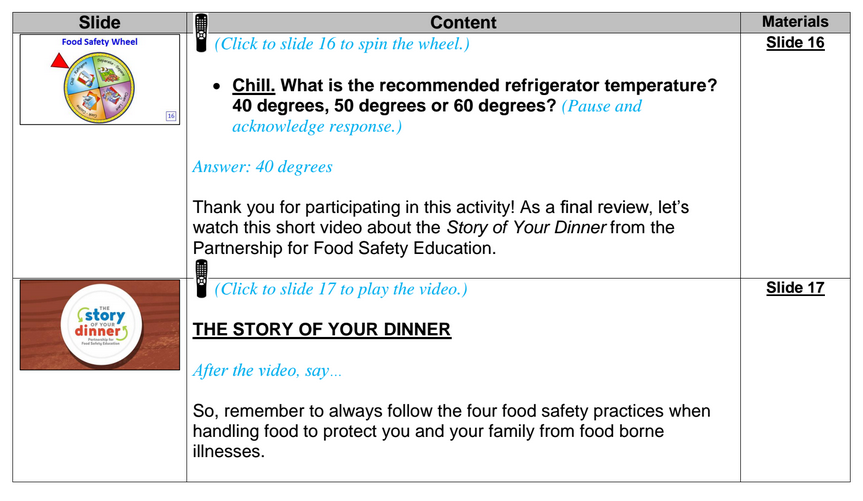
To keep the children busy while they are waiting for their parents to finish the class, she prints and distributes Fight BAC coloring pages.
Marilen created versions of the presentations in several of the languages spoken in her community.
What were the results of all this food safety creativity? In-person classes provided at 13 WIC sites, combined with self-learning home modules, reached over 12,000 WIC participants in April and May!
Marilen says, “We thank you so much for allowing us to use your free resources. It made our WIC participants’ class experience much better.”
- 1
- 2
- 3
- …
- 5
- Next Page »
